DSLR imaging Asteroid (4299) WIYN Mag. +15.8
Posted: 9 February 2021
Sunday, 7 February 2021, began with a clear sky but clouds began arriving late in the afternoon. Monday, 8 February, was clear, until near sunset when clouds arrived (a day earlier than forecast). By about 2000 MST the sky was mostly clear so I went out to the observatory..
|
Open: Monday, 8 February 2021, 2006 MST Temperature: 59°F |
Session: 1593 Conditions: Mostly clear |
Equipment:
12" f/8 LX600 w/StarLock
2" 24mm UWA eyepiece
Focal Reducer
Camera:
D850 DSLR
iPhone 11 Pro Max
2010 MST: LX600 ON, StarLock OFF, High Precision OFF.
Mounted the D850 DSLR at prime focus + focal reducer, focused on the star Procyon, and locked the 12" telescope primary mirror.
2021 MST: Wi-Fi adapter ON.
Used SkySafari 6 Pro on the iPhone 11 Pro Max to GOTO Asteroid (4266) WIYN, Mag. +15.8. This asteroid is named for the WIYN observatory at Kitt Peak National Observatory, 65 miles from Cassiopeia Observatory. I had hoped to let the asteroid rise a little higher in the eastern sky but approaching clouds forced me to start imaging earlier than planned.
2024 MST: StarLock ON, Wi-Fi OFF.
I did StarLock autoguided, 5 minutes, ISO 6400, exposures of Asteroid WIYN at 2030 MST and 2130 MST. At 2103 MST and 2118 MST I took these iPhone photos showing some clouds in the northern sky (left) and the eastern sky (right). The Big Dipper is visible at the right of the northern sky photo (as is light pollution from a neighbor's greenhouse). The constellation of Leo is shown in the eastern sky photo. As indicated by the SkySafari Pro chart, Asteroid WIYN was in Leo.
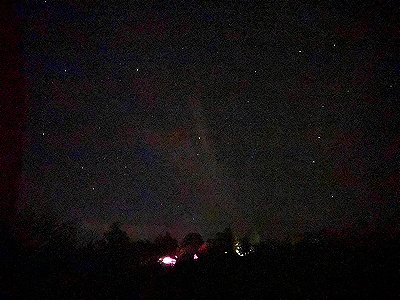
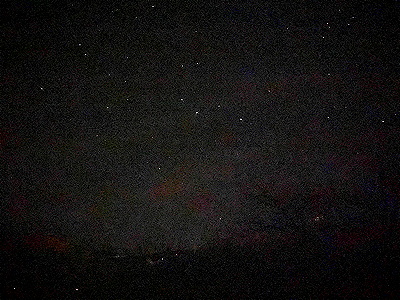

2135 MST: StarLock OFF.
Although conditions were not ideal for imaging, I did capture Asteroid (4266) WIYN. Also in the field of view were two faint galaxies, PGC1574012 (Mag. +15.7) and PGC1573233 (Mag. +16.5).
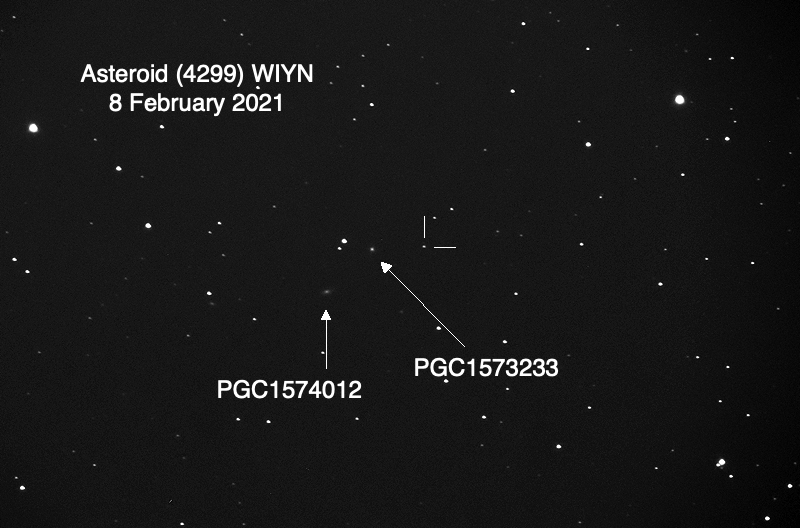
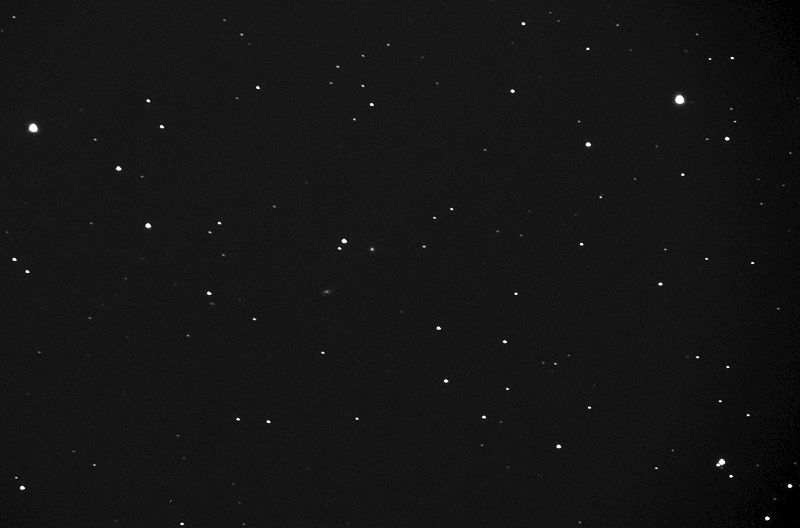
As I have mentioned before, I fell in love with asteroids as an undergraduate astrophysics student at Indiana University. In 1966, as a freshman, I worked on the IU Asteroid Program. I was on the Program for four years and even worked there full-time during the summer after graduation in 1970. I was one of several students who would measure star and asteroid positions on 8x10 inch photographic glass plates using the Gaertner Measuring Engine.
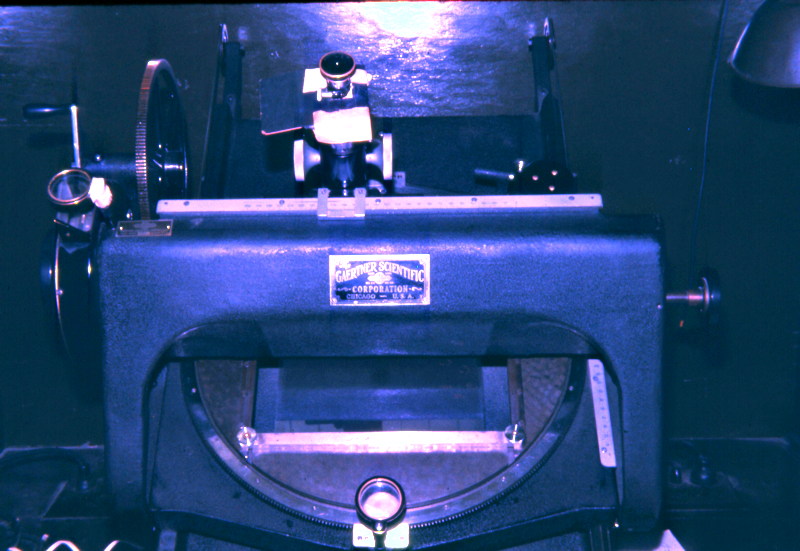
The plates were taken using one of the telescopes at Goethe Link Observatory, which was operated by IU at the time. I visited the Observatory only once as a student and that was a very short visit.
Photographing asteroids that are named for people and places that I know has become an obsession with me and it is nice to have added Asteroid WIYN to my collection of images on my Asteroids & Dwarf Planets album.
2149 MST: LX600 OFF.
|
Close: Monday, 8 February 2021, 2158 MST Temperature: 52°F |
Session Length: 1h 52m Conditions: Mostly clear |
Comments are welcome using Email. Twitter users can use the button below to tweet this report to their followers. Thanks.
Cassiopeia Observatory Home Page
Copyright ©2021 Michael L. Weasner / mweasner@me.com
URL = http://www.weasner.com/co/Reports/2021/02/09/index.html
